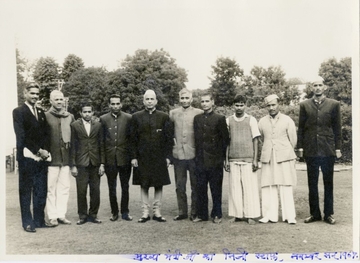The downfall of the Congress in Uttar Pradesh accelerated at an alarming pace in the 1960s as power and money became the main binding force for state politicians. Venality and groupism grew among the ranks and the leadership. The consequence soon became clear electorally - for the first time since Independence, the Congress fell short of the majority mark in the 1967 parliamentary elections, not only in UP but in many states across India. By March, 1967, Charan Singh’s long time political rival C.B. Gupta scrambled for the leadership position by uniting various political factions in the Congress. Charan Singh resolved to contest for the leadership of the legislature party but was persuaded by 3 emissaries of Indira Gandhi to step down in favour of Gupta to avoid an ‘unseemly’ contest at a time the party was seen to be weak. Charan Singh agreed, but Gupta refused to exclude cabinet members who had allegations of corruption against them, as demanded by Singh in return for stepping down, and refused any mediation from the Center on Charan Singh’s demand. On the other side, the coalition of non-Congress representatives (dubbed the “Samyukt Vidhayaks”) protested the Governor’s call to Gupta to form the ministry, citing the move as another exhibit of favoritism towards the Congress. The Congress had been humbled by the voters, and the road ahead was going to be bumpy for Gupta’s ministry.


